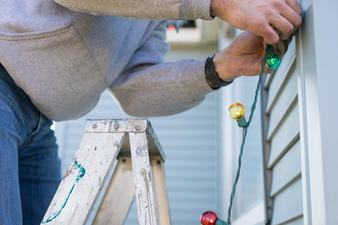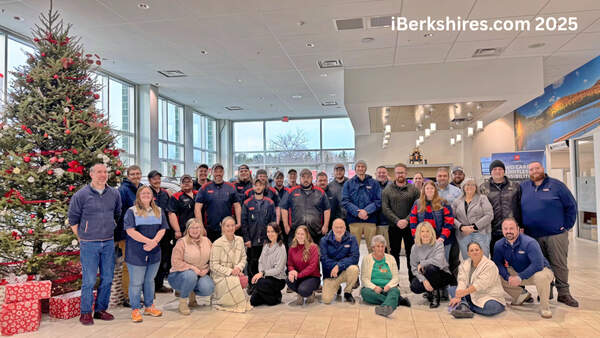
Ten Tips for Safely 'Decking those Halls' this Season
 |
According to the National Fire Protection Association, 30 percent of all home fires and 38 percent of home fire deaths occur during the months of December, January, and February. While these fires result from a variety of sources, the Federal Emergency Management Agency notes that winter holiday fires are more severe than the average fire during the year across all loss measures and that holiday decoration and Christmas tree fires, in particular, are substantially more damaging than other fires. These fires result in twice the injuries and five times the fatalities per fire as the average winter holiday home fire.
Another common source of holiday injuries is falls. The Consumer Product Safety Commission reports that approximately 160 decorating-related injuries occur each day in the U.S. during the holiday season. Almost half of those accidents involve falls which often lead to broken bones, concussions and pulled muscles.
To ensure you enjoy your holidays safely and to their fullest, follow these safety tips when decorating.
1. Check all holiday light cords to make sure they aren’t frayed or broken. Don’t string too many strands of lights together—no more than three per extension cord.
2. If you are buying an artificial tree, look for the fire-resistant label. When putting it up, keep it away from fireplaces, radiators, and other sources of heat.
3. If getting a live tree, make sure it’s fresh. You can do this by gently pulling on a shoot with your thumb and fingers; if the tree is fresh, you should not have any needles come off in your hand. Before placing it in the tree stand, cut 2 inches off the trunk to expose fresh wood for better water absorption (if you don’t have a saw, ask the person at the tree farm to do this for you). Be sure to water daily to keep it from drying out. If your home is especially warm or dry, you may need to add water more than once a day.
4. Don’t use electric lights on metallic trees.
5. Don’t forget to turn off all holiday lights when going to bed or leaving the house.
6. When decorating outside, make sure decorations are for outdoor use and fasten lights securely to your home or trees. If using hooks or nails outside, make sure they are insulated to avoid an electrocution or fire hazard.
7. If using a ladder, be extra careful. Always inspect the ladder for any damage prior to using it. Make sure to have good, stable placement and wear shoes that allow for good traction and follow the 1-to-4 rule for extension ladders: for every four feet the ladder rises, move the base out one foot from the structure.
8. Always keep three points of contact on the ladder: two hands and one foot, or two feet and one hand.
9. If hanging items indoors, use a step ladder and make sure it’s on a level, stable surface. Never use furniture as a ladder.
10. Place candles where they cannot be knocked down or blown over and out of reach of children. Keep matches and lighters out of reach of children. When possible, opt for flameless, rather than lighted, candles.
One last precaution to take before the holidays: test all smoke alarms and carbon monoxide detectors. Lest you think that’s excessive, remember that a high percentage of home fire and home fire deaths occur during the upcoming months and, according to the Centers for Disease Control and Prevention, half of all reported cases of carbon monoxide poisoning occur during the winter. A simple test that takes just seconds can literally be lifesaving.
Sean Burns, MD, is the SVMC EMS Medical Director/District 12 Medical Advisor.















